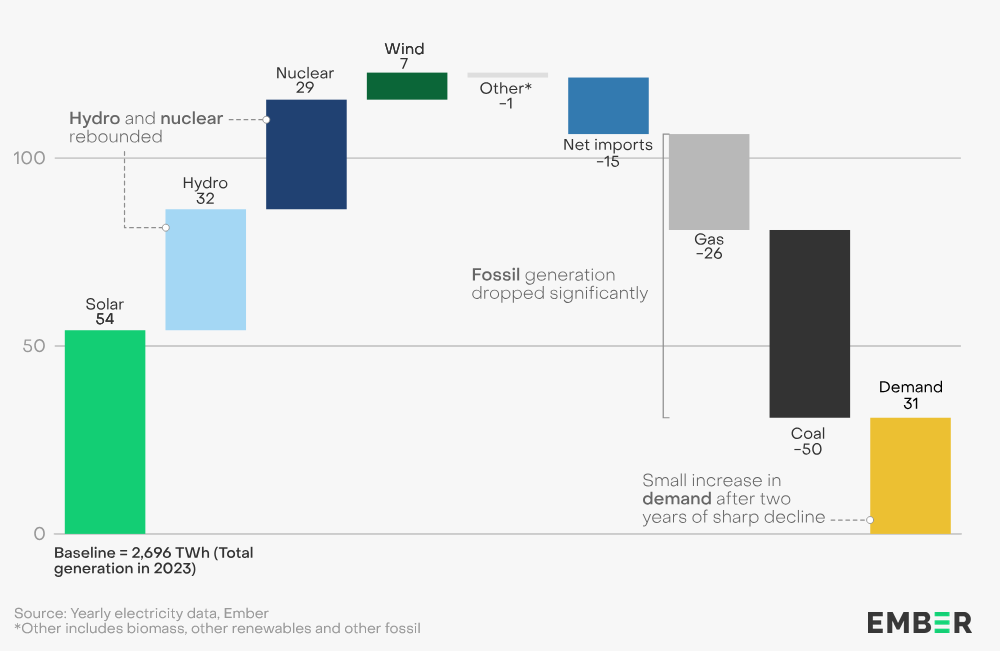A new analysis by Ember reveals that, two years after the COP28 agreement to triple global renewable energy capacity by 2030, national targets have barely made progress, with the total global ambition increasing by just 2 per cent.
National renewable energy targets collectively now add up to 7.4TW for 2030, just over double the 3.4TW installed in 2022, falling significantly short of the 11TW needed to meet the tripling goal agreed at COP28.
22 countries have revised their targets since COP28 with the majority in the EU alongside the UK, Brazil and Australia and four other countries.
The US has no national 2030 renewables target, and with the One Big Beautiful Bill becoming an Act and rolling back the Inflation Reduction Act (IRA), the country is not expected to set targets in the near future.
India’s target of 500GW remains unchanged but is already aligned with the tripling goal. Russia does not have a 2030 renewable energy target and is not expected to announce one.
China is currently finalising its 15th Five-Year Plan for Energy, which is expected to include a 2030 renewable energy target, though it’s unclear if it will appear in this plan, the NDC, or both. South Africa is also in the process of updating its Integrated Resource Plan, which may bring an update to its 2030 target.
Dr Katye Altieri, global electricity analyst at Ember commented: “The purpose of a national renewables target is less-so to force more renewables to be built, but rather to make sure they are built smarter. It can help the government plan for the best place to build renewables and plan for grid and flexibility to integrate the renewables, and also to help companies invest in supply chains, making for a cheaper and more secure electricity system.”
© 2019 Perspective Publishing Privacy & Cookies






Recent Stories